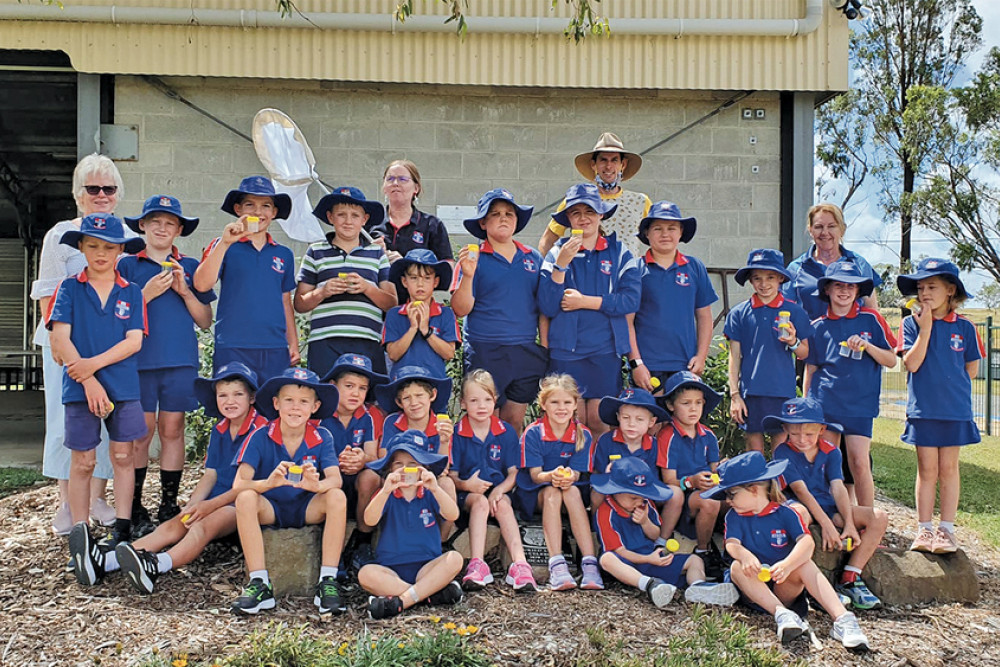Community & Business
22 March, 2023
Insects under the microscope
Back Plains State School is one of 17 schools in Queensland and 50 schools across three states involved in a University of the Sunshine Coast project uncovering previously unknown insects.

Only about 30 per cent of the estimated 225,000 insect species in Australia are formally named and described.
Back Plains principal Lara Waters the school was chosen early last year after applying to be part of Insect Investigators.
The school had become aware of the project after an article had been published about it in On Our Selection News.
Mrs Waters said the students of Back Plains were tasked with setting up a Malaise trap (a device used to trap insects) and each week for four weeks changing the bottle that was holding the insects.
The insects were then transported to Adelaide to be sorted and categorised and then on to Canada to be genotyped.
Mrs Waters said participating in the project has, for the students, “unlocked their interest in science.”
“Our students have contributed to the scientists by adding to the database,” she said.
“They are the scientists collecting the data.”
Mrs Waters said the students had a thrill last year as on an excursion to the Queensland Museum they saw specimens that had been collected at their school on display.
“The students were rather excited about that,” she said.
University of the Sunshine Coast entomologist Dr Andy Howe, who coordinates 17 Queensland schools in the Insect Investigators citizen science project that started a year ago, said initial results were exactly what researchers hoped for.
Dr Howe has visited Back Plains State School as part of the project.
“DNA testing in Canada and analysis by taxonomists at the University of Adelaide and partner institutes have confirmed that specimens sent from insect traps at schools in three states contained species undescribed by western science, with more to come,” Dr Howe said.
At Back Plains, 285 specimens have been tried to sequence for a DNA barcode, 268 successfully.
Of the 190 different species found based on the DNA barcodes, 36 have been identified and 154 do not have a reference DNA barcode available.
The types of anthropods found by Back Plains students include flies, wasps, bees, ants, beetles, spiders, cockroaches, months, butterflies, crickets and grasshoppers.
At Beerwah State High School on the Sunshine Coast, a parasitic wasp has been discovered, in the genus Mirax from the family Braconidae.
“This wasp lays eggs inside living caterpillars and the larvae then eat their way out of the host,” Dr Howe said.
Students and staff from Back Plains, Beerwah and other schools involved in the project attended the World Science Festival Brisbane for a presentation by Dr Howe, National project leader Dr Erinn Fagan-Jeffries and colleagues Dr Chris Lambkin and Susan Wright from the Queensland Museum.
Fourteen students from years 2 to 6 will be attending and three of those students have been chosen to speak on stage,
The Insect Investigators festival presentation will be held at the Cremorne Theatre at QPAC.
Insect Investigators received grant funding from the Australian Government and is led by the South Australian Museum with the support of organisations including the University of the Sunshine Coast, The University of Adelaide and the Queensland Museum.
More than 14,000 insect specimens were selected from school traps in South Australia, Western Australia and Queensland last year for DNA barcoding and taxonomy.
About 56 per cent of the DNA barcodes identified were new records to the Barcode of Life database, a freely available collection of molecular and species occurrence data.
Schools selected range from inner-city such as Yeronga State School to as remote as Mornington Island.


